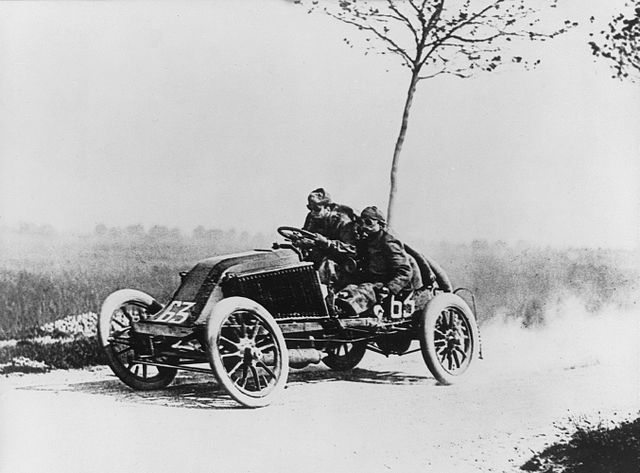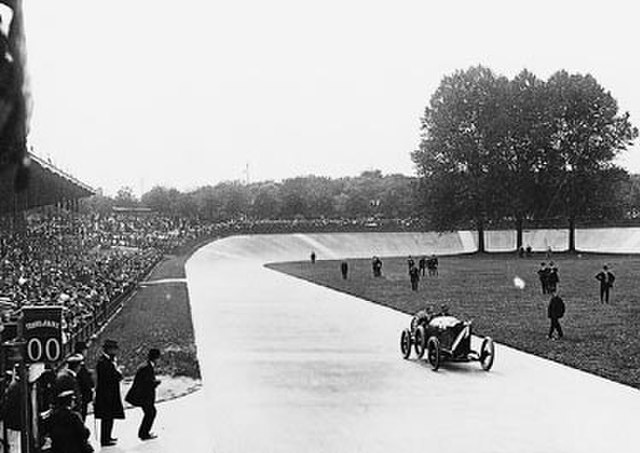The 1913 Grand Prix season consisted of Grand Prix races in Europe and the United States. Once again, the Peugeot works cars were the team to beat, continuing their success. This year the French Grand Prix was held in Amiens. The ACF introduced a fuel-economy formula for the race to discourage bigger-engined cars. Peugeot drivers Georges Boillot and Jules Goux claimed a 1-2 victory for the company after Zuccarelli had been killed in practice.
Nazzaro racing in the Targa Florio
Bragg leading the rolling start of the Indy 500
Jules Goux
Boillot in his Peugeot EX3. French GP
Grand Prix motor racing, a form of motorsport competition, has its roots in organised automobile racing that began in France as early as 1894. It quickly evolved from simple road races from one town to the next, to endurance tests for car and driver. Innovation and the drive of competition soon saw speeds exceeding 100 miles per hour (160 km/h), but because early races took place on open roads, accidents occurred frequently, resulting in deaths both of drivers and of spectators. A common abbreviation used for Grand Prix racing is "GP" or "GP racing".
Marcel Renault during the 1903 Paris Madrid trial.
Georges Boillot winning the 1912 French Grand Prix in Dieppe, France
Grid of Coppa Fiera di Milano 1925







